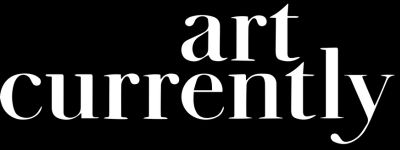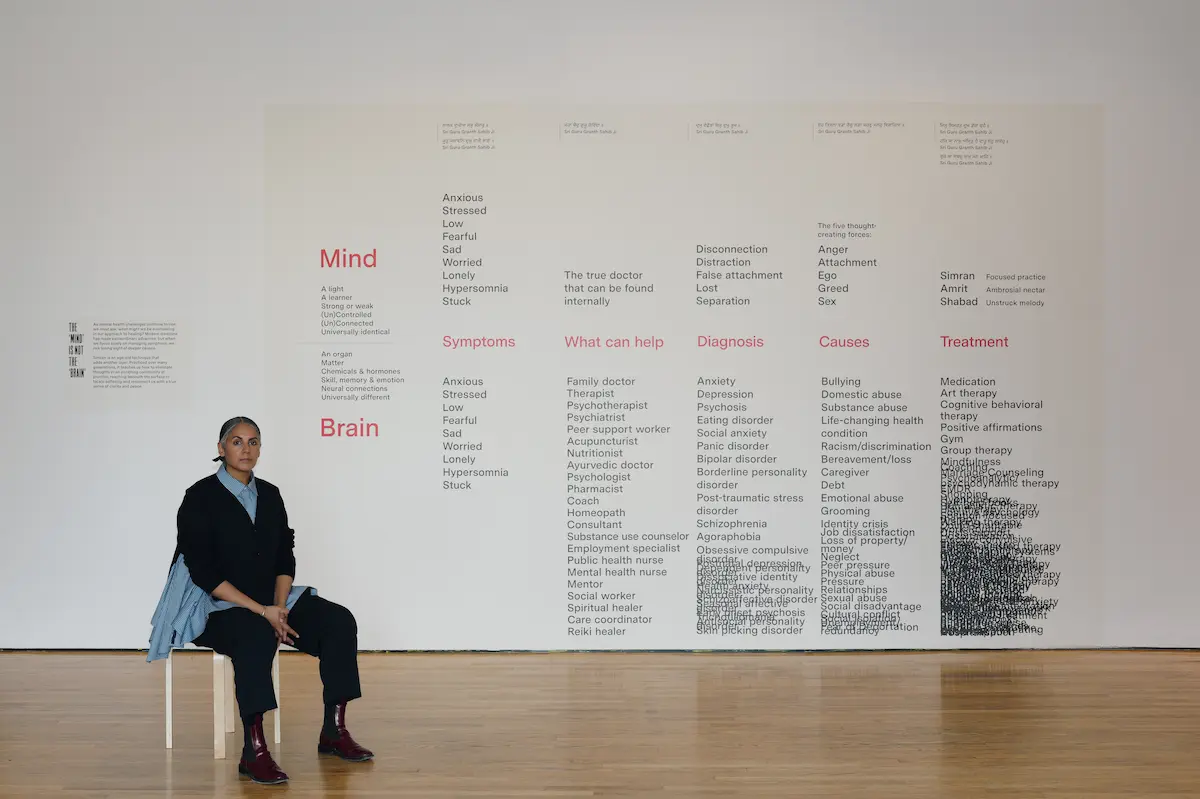An Interview with Deep Kailey on Art, Stillness, and Contemporary Sikh Philosophy
Deep Kailey in Queens Museum, courtesy without SHAPE without FORM
Journey of the Mind, now on view at the Queens Museum, marks the U.S. debut of without SHAPE without FORM, a UK-based arts organization using contemporary visual culture to explore Sikh teachings on harnessing the mind. Led by Art Director Deep Kailey, whose career has spanned fashion editorial roles at Vogue India and Tatler before transitioning into the art world as a curator and cultural leader, WSWF has quietly built a resonant presence across major British institutions for exhibitions that combine immersive installations, meditative practice, and community engagement. In this conversation, Deep reflects on the project’s origins, a renewed cultural interest in inner life, and why she chose art as a vehicle for these centuries-old philosophical teachings.
I’d love to start with the institutional history behind Journey of the Mind. How did this exhibition grow out of your work in the UK, and how did it arrive at the Queens Museum as your U.S. debut?
Journey of the Mind came out of what we’d been doing quietly since 2017 at our home gallery in Slough. During COVID, a few of us began what we thought was a small food program for about twenty families—within ninety days it became 470 tons of food, a million hot meals, and partnerships with 150+ charities. When that year ended, we sensed another crisis—a mental-health pandemic.
With daily distractions gone, people had to face their minds. If you have tools, that’s a blessing; without them, it’s hard. We reimagined our exhibitions to open those conversations. We realized we were sitting on this knowledge.
People don’t always know where to find what they need. At our first Birmingham show, someone wandered in while waiting for a tow truck and left saying, “This is exactly what I needed today.” We built a disruptive tour model—three-week runs that create real energy. Since 2021 we’ve toured five major UK cities, including the V&A. It proved the work speaks directly to the mind, across age, background, belief. People see themselves in it. That recognition led to North American talks, and Queens was the first to land.
It does feel like conversations around spirituality and mental wellbeing have become more visible. Have you noticed a shift more broadly?
Like you said, it might be an echo chamber, or just that I’m immersed in it every day. But in the UK, we’ve unexpectedly been labeled the leading art space talking about spirituality—that was never the intention. We didn’t seek to fill a gap in the market. I think these conversations are surfacing because people are being pushed to ask “There must be more than this.” The world feels intense; people are trying to make sense of it. That’s when communities form—and by “community” we mean like-minded people regardless of age, race, gender, or creed. It’s about shared humanity.
How did your own practice begin, and how does it inform your work now?
I began the focused practice of Simran about twenty years ago, though I only started speaking publicly about it recently. You can have a deep spiritual practice and a demanding career—the two don’t need to intersect. For a long time, mine didn’t. I was at the height of my fashion career, and by society’s standards, I’d “made it.” But when I got there, it felt empty, there was no pot of gold at the end. That feeling, and the bigger questions that followed, pushed me inward.
Simran is simple—a two-syllable word repeated with complete focus in your own voice. When the mind quietens, the first byproduct is peace, and it comes quickly. And peace is only the beginning. Wait until you get to clarity, purpose, direction, fearlessness.
Journey of the Mind, without SHAPE without FORM, Queens Museum
You speak beautifully about Amrit—the “inner sweetness” that comes with practice. How does that idea relate to the exhibition?
Completely. In Sikh teachings, peace is described as ghunghe ki mithai, which means it’s like a deaf person trying to describe the taste of something sweet. You just can’t.
When peace comes, it’s not blankness; it’s full, complete, intentional. And once you feel it, you can’t help but want more. The mind has been restless for so long—many lifetimes, not just this one—so when it finally experiences peace, it’s natural to crave that stillness again.
Amrit, like Simran, is tangible—“do that, this will happen”—it’s black and white, and it works. Amrit is a specific term, it’s the ambrosial nectar that arises when thoughts begin to dissolve. Literally, your taste buds become sweet.
As the exhibition shows, the mind and the brain are different: the mind is light, the brain is an organ. And light has no age, gender, race, or creed. That’s where true equality begins—Amrit, inner sweetness, exists in everyone.
Thank you for explaining that. Returning to the exhibition, how did you decide which artists to work with for this show?
Kanwar Singh was the first artist we worked with, and his work helped shape Without Shape Without Form. He’s deeply respected within the Sikh community worldwide, which mattered to us because we refer to this exhibition as our Origin Story. These teachings come from a very specific place—they’re not mine—and Kanwar depicts the ten teachers with so much respect and depth. Not every artist we work with is this literal, and we won’t always take this approach. But it felt right with this story.
What led you to choose art as the medium for sharing these teachings?
It’s a simple answer, art is a universal language. It has the power to move, not only by what you see, but by the intention with which it was created. I’m sure all of us have been moments when you look at something and you can't understand why it brings you so much joy or why it frustrates or challenges you.
Historically, the teachers spoke in the languages of their times. Persian, Punjabi, regional dialects across India, even stories of teachings shared as far as Tibet, China, Rome—so the teachings could land. Today our language is also the mediums people engage with: art, editorial, performance, conversations. The teachings are timeless; the delivery simply adapts.
What do you hope people take away from Journey of the Mind?
Hope. A sense that there are other ways of existing in the world—not outside it, but while fully living in it. You don’t need to renounce your life; you need to renounce the thoughts that weigh you down. Fearlessness and clarity belong to everyone.
How do you know which opportunities align with the organization’s purpose and which don’t?
Opportunities are always there. It’s about whether both sides are aligned to see them. You can usually sense it quite quickly in someone’s curiosity, or in a meeting when someone’s eyes are on you but their mind isn’t.
Art spaces are open to all of this because they’re naturally curious and they’re naturally civic. Museums and galleries are there for people and they want to give people an experience in an interesting way. And art is already doing the job of pushing conversations forward. Having conversations even before those conversations become important—responding to the time that we live in, expressing rather than prescribing. So in most of the spaces we’ve worked with, there’s been real synergy.
And when there’s not a synergy, that’s fine too. You take it as a sign—this isn’t the right place or the right moment. In Punjabi we call it Babek—true, open wisdom that comes as you start doing the practice. You know ahead of you. how to read a situation for what it is. And that wisdom to know what to say comes to you quite naturally, to be able to figure a strategy out.
Going back to what you said about art spaces being naturally civic: seva, or selfless service, is such a core part of Sikh philosophy and WSWF. What does it look like in the context of an arts organization?
For us, seva becomes both a curatorial framework and an operating model. It’s a cultural shift—the opposite of capitalism—because it’s rooted in giving without expecting anything in return.
In the most pragmatic sense, it looks like forty of us showing up for an install. And suddenly the institution understands why we can put up an exhibition in two days. It’s not just the number of people—it’s that they’re aligned people. There’s no ego, no battling for credit, just service to the work. When teams see that, it makes them question their own systems. And that’s not specific to museums; it’s any workplace. Here, the return comes to you through your own path, your own journey. So for institutions, it becomes an entirely different way of working, and I think that’s what they find so striking.
And the last question is, what do you feel like, what is something people never ask you, but you wish they did?
I wish people would ask, “How do I do it? How should I start?” Not out of obligation, but from genuine curiosity, because they actually want that shift in their own lives.


.webp)
.webp)
